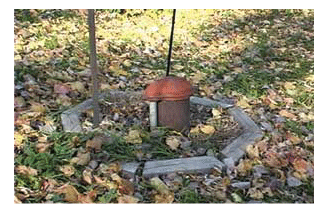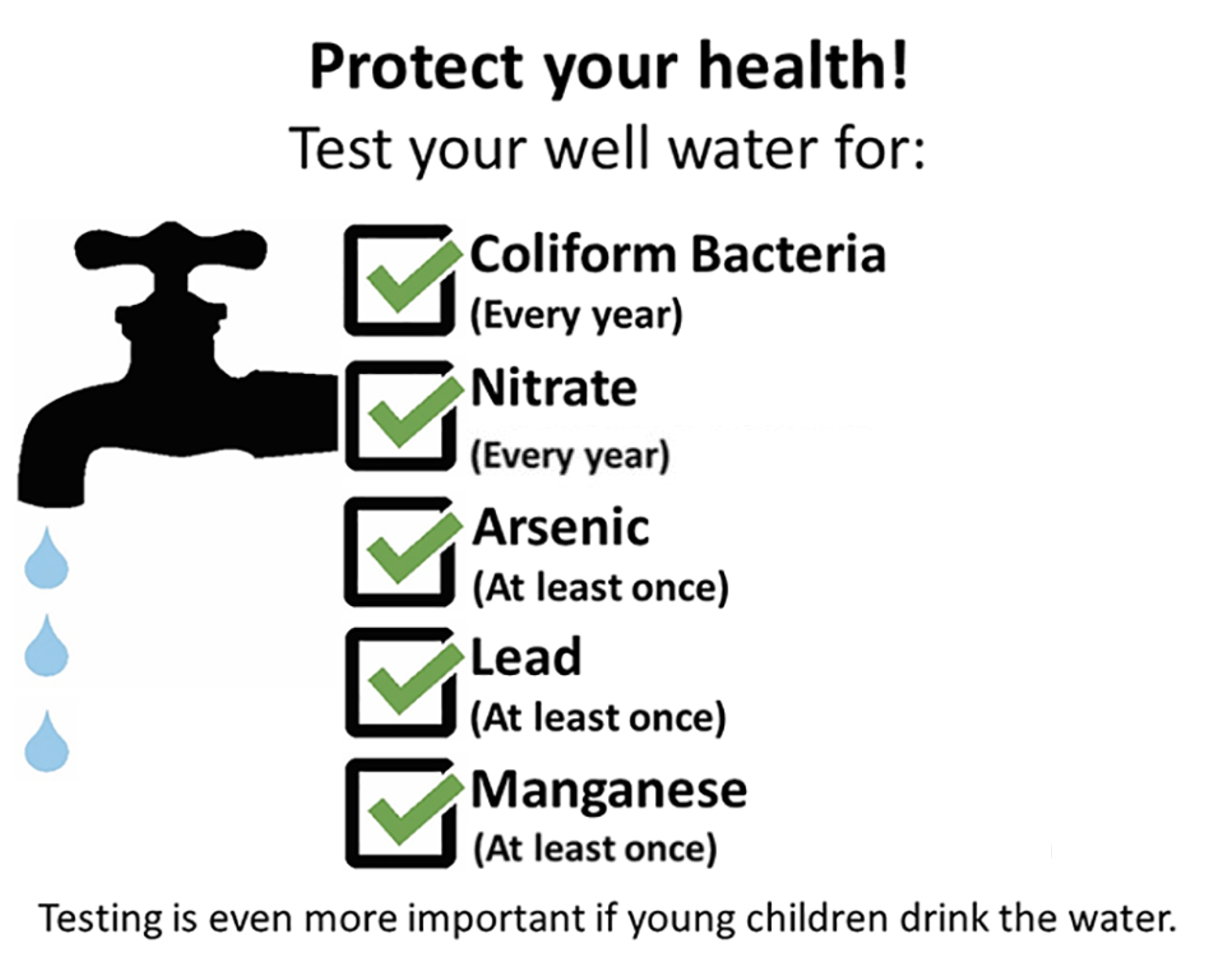Symptoms Of A Cracked Well Casing
The well casing is one of the most important parts of your well; it keeps debris, insects, and sediment out of your water. However, it’s also one of the most commonly replaced parts of a well, so it’s not out of the question that yours may be cracked or damaged (especially if it’s older).
The well casing is the tube that travels from the well above the ground and gives you a direct line to the pump and the well itself. It can become cracked in a variety of ways, including:

Well casing determines the size of well seal needed. Example: a six inch casing requires a six inch well seal, eight inch casing requires an eight inch well seal. Several holes are available that penetrate the top of the seal to accommodate well pipe and wires etc. Pipe hole in the seal is situated on center of the well seal, with other smaller. The well casing is one of the most important parts of your well; it keeps debris, insects, and sediment out of your water. However, it’s also one of the most commonly replaced parts of a well, so it’s not out of the question that yours may be cracked or damaged (especially if it’s older).

Symptoms Of A Cracked Well Casing Size
In more severe cases, the fracture may cause nerve symptoms including numbness, tingling, muscle spasms, weakness, bowel/bladder problems or even paralysis. Diagnosing Spinal Fractures Vertebral fractures are diagnosed by an x-ray in the respective location of the spine – neck, mid back or low back. Water will leak out of a well pipe at a bad connection, perforation, or cracked pipe when the well pump is running, particularly if the water system uses a submersible pump that is located in the well itself. If you have this problem you may find a wet spot in the ground near the well piping, provided that the pipe is close enough to the surface. A well is a system used to draw water up from an underground water source. Usually, a hole is drilled into saturated soil or rock, with a pipe inserted to draw water to the surface.
- Being struck by lightning during a storm
- Being hit with a car or lawnmower
- Earthquakes and other ground shifting events
- Extreme heat and cold
- Age
- Natural wear and tear
How to Tell If Your Well Casing Is Cracked
If the well casing is cracked above the ground, you’ll most likely be able to see it. Otherwise, cracks below-ground can be letting sediment and other dirt and debris into your water supply. If you find that the water coming out of your faucet is full of sand, dirt, and other particles, it might be time to call a well repair company to inspect your casing.
Repairing a Cracked Well Casing

There are two ways that a well specialist might fix a well casing:
First, for above-ground damage, they may suggest repairing the pipe and extending it upwards so that it’s easier to see and avoid in the future.
The second approach involves placing a liner against the part of the pipe that is damaged. This involves pushing a camera down inside the pipe and inflating a lining to seal to the interior of the casing.
If you are unsure if your well casing is cracked or if you need an estimate on how much it’s going to take to fix your casing, contact Goold Wells & Pumps in Valatie today!
A residential well is a great resource and can provide you and your family excellent water for many years. In most cases, they require minimal servicing. Most wells can operate for years without maintenance, but that doesn’t mean your well doesn’t need occasional servicing. It is important to know the signs of well water problems so you can identify a possible problem before it becomes too serious.
How Does a Well Pump System Work?

While wells can work a few different ways, a typical water well has a submersible pump that pumps water directly into a house. Some wells have pumps that are called jet pumps. These are located on the surface or top of the well and are used in conjunction with a pressure tank. A well water pump system maintains a constant supply of pressurized water throughout the house and piping system. The well pump switches on and off with a pressure switch in order to maintain water pressure.
Common Signs of Well Issues
While there are multiple reasons your well pump could be experiencing issues, there are 7 typical signs of well water issues:
1. Well pumps air and well yield is reduced
If your kitchen faucet blasts out a mixture of air and water when you turn it on, this is a big indicator that something is wrong with your well. This could mean that your water table has dropped at or below the well pump and the pump is drawing in air during the pump cycle. This could also be caused by a broken well pump drop pipe. These pipes can become broken, corroded or develop cracks which can allow for air to be sucked in.
2. Well is pumping sand or sediment
If your well starts to fill with sand, this is a common sign that your well is silting in or filling with sand and silt. Another cause for sand in your water could be that the well screen has become degraded and is allowing sand or sediment from the gravel pack around the well screen through. Sand will wear out the pump valves and fill up the bottom of the well.
3. Water pressure is low
Low water pressure can have many causes, but most commonly can mean a failing well pump, stuck check valve, partially closed or bad ball valve, or leaking/failing pressure tank. In one case, iron bacteria to clog the pipe leading to the pressure switch which causes the pressure switch to incorrectly sense the pressure.
4. Power bill has greatly increased
When a pump wears out or becomes blocked with sand, silt or iron bacteria it has to work harder than if it was in good shape or unblocked. When your pump has to work harder, it can result in an increasingly higher power cost. If the check valve in the well goes bad, this can also contribute to a high power bill.
5. Water quality has changed
Symptoms Of A Cracked Well Casing

If your water is spurting out of the tap or if air is dissolved in the water, this could mean a problem for your well. Some groundwater tables can contain distinct types of gases which may be dissolved in the water but later come out of solution and will cause the water to spurt or sputter at the tap.
6. Bubbles or dissolved gases in the water
It isn’t unusual for small air bubbles to appear in a glass of water from a kitchen faucet. These bubbles can be both naturally occurring and or caused by mechanical reasons. As mentioned above, some groundwater tables contain usually small amounts of various types of gases, which can be carbon dioxide, methane, hydrogen sulfide or other gases. Some of thee gases can be harmful and cause safety and health problems, so if you are seeing quite a few bubbles you should have your water tested. Bubbles can also occur when the water level in a well is low, causing air to get inside of the pump.
7. The pressure switch and pump continuously cycle on and off
Symptoms Of A Cracked Well Casing In Spanish
A leak in your home or corrosion of casing, liner or screen can cause the well pump to run continuously. Holes will allow water of undesirable quality to enter your well. You should be on the lookout for leaking toilet flush valves, reverse osmosis systems, iron filters and the backwashing filter systems that could be malfunctioning. Some other common causes are a failed check valve or the pressure tank losing its captive air pressure.
What Should You Do If You See One or More of These Signs?
Lining A Well Casing
Now that you know some signs to be on the lookout for, it is important to know that you shouldn’t try to fix any of these problems on your own. Regular maintenance and inspections are very important in order to help try to prevent any costly well pump issues.
Symptoms Of A Cracked Well Casing Pictures
Well pump systems can be tricky to fix, which is why it should be left to the experts. When you notice a problem, you should shut your water pump off and call Mosman Well Works right away. We are available 24/7 for emergency services, so don’t hesitate to give us a call! We specialize in emergency well pump replacement, no well water issues, and water treatment services for residential and commercial.